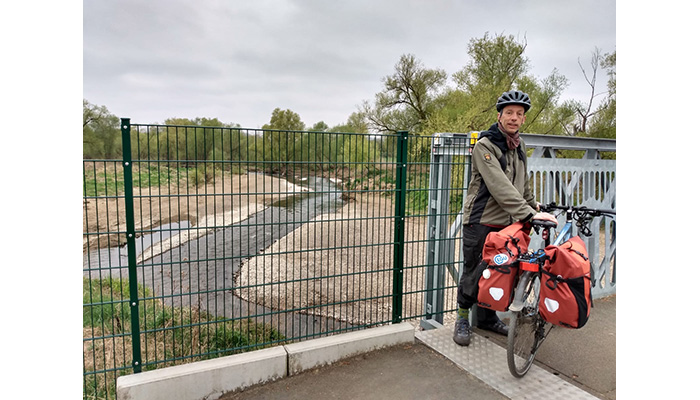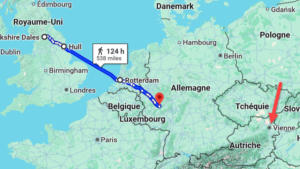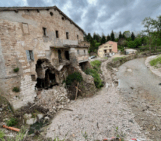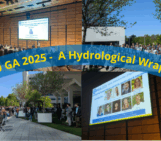
We’ve now been pedalling (unaided by batteries, in case you were wondering) for six days along the Rhine. I’m writing this in the warmth of the evening sun, sparkling off the river, flowing gently past tonight’s campsite, which occupies the hundred metre wide floodplain between the left bank and a steeply-sloping vineyard.
Today’s ride took us through Koblenz, where the Mosel joins the Rhine. Earlier we passed another confluence. A trickle in comparison, easily missed, yet one with much significance for my journey to EGU. The cycle track crossed this tributary on a brand new metal bridge, built to replace a traditional covered wooden bridge over the river Ahr that was destroyed- along with so much else- in the flood of July 2021. This extraordinary and tragic flood seems to have led to much questioning of received hydrological wisdom, with a counter-torrent of
articles on megafloods, “impossible” floods, heavy-tailed flood distributions and more.
The Ahr flood happened part-way through a project I was leading, reviewing methods for estimating probable maximum floods (PMFs) and probable maximum precipitation (PMPs) in the UK (it’s recently been published here). One option we considered, but didn’t explore during that project, was whether physics-based hydrological models might be able to represent the intensification and acceleration of runoff processes that has been reported during extreme floods. While conceptual models can be tweaked to do so (and empirical flood frequency analysis likewise), might physically based models be able to explicitly represent the expected
shift in runoff processes?
In the aftermath of the 2021 floods and more recent extreme events in Valencia and elsewhere, JBA has been working with a PhD student at Newcastle university, to explore this question. I’ll be presenting some findings at EGU, assuming we don’t have too many more days with three punctures between here and Vienna.
Edited by B. Schaefli
Note by the editor: I do not know the exact route, but to give you an impression, here the approximate map:

For part 1 of the trip, see the blog post here.
For our blog post on science communication after the 2021 floods in Germany, see here.
Four a blog post on the event in Valancia, see here.





antok
Thank you for sharing such a vivid, thoughtful, and beautifully written reflection.
Your journey weaves together the serenity of nature, the resilience of communities, and the evolving science of hydrology in a way that’s both personal and profoundly relevant. The quiet symbolism of crossing the new Ahr bridge—where devastation met reconstruction—adds depth to your exploration of extreme flood modeling. Wishing you smooth paths, fewer punctures, and a meaningful presentation at EGU!
Regard Unissula